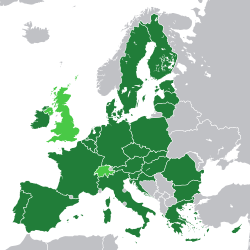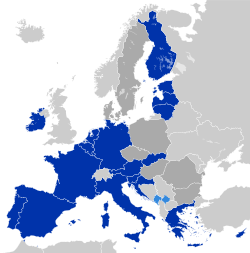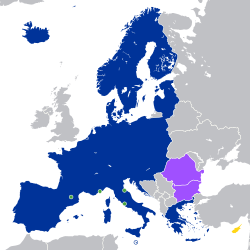This article relies largely or entirely on a single source .(March 2023) |
| |
|---|---|
 Countries involved in the treaty, with newly joining countries in yellow and existing EU countries in blue. | |
| Signed | 12 June 1985 |
| Location | |
| Effective | 1 January 1986 |
| Condition | Ratification by Spain and Portugal and all 10 Member States of the European Communities |
| Signatories |
|
| Ratifiers | 12 / 12 |
| Depositary | Government of the Italian Republic |
| Languages | All 8 official Languages of the European Communities, Spanish and Portuguese |
| This article is part of a series on |
 |
|---|
The Treaty of Accession 1985 was the agreement between the member states of the European Communities, Spain and Portugal, concerning these countries' accession into the EC. It entered into force on 1 January 1986. The Treaty arranged accession of Spain and Portugal to the EC and amended earlier treaties of the European Communities. As such it is an integral part of the constitutional basis of the European Union. [1]



